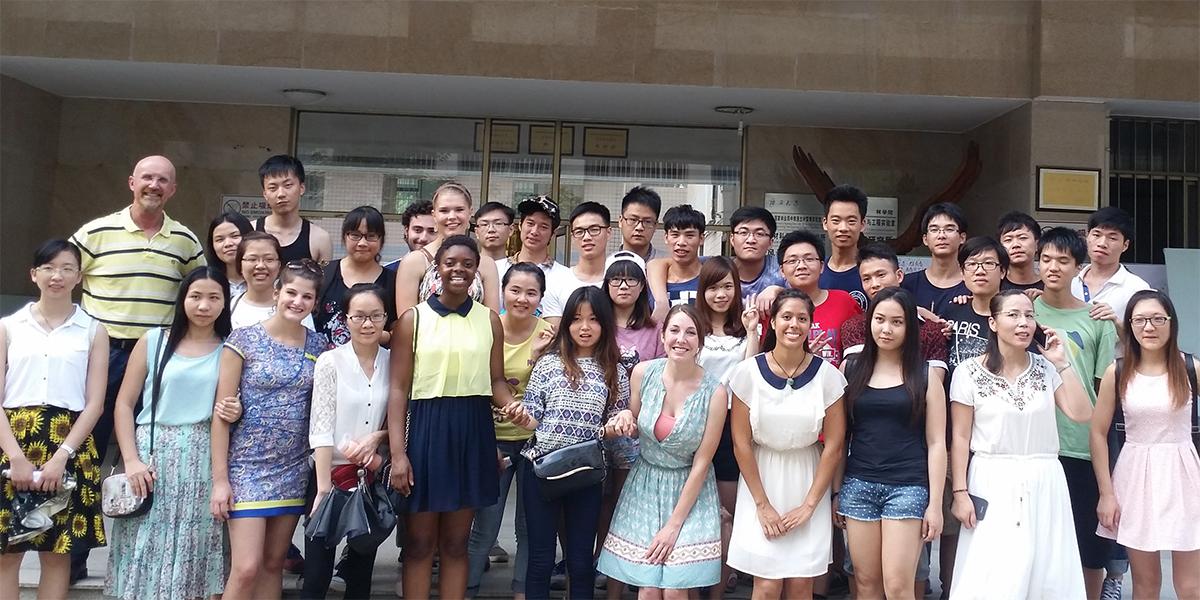Roger Williams is a connector. As the academic director of the China Gateway, he works to foster collaboration among faculty and staff at Ohio State and partners in China. An associate professor of forest ecosystem analysis & management in the School of Environment and Natural Resources, Williams has been working internationally on forestry issues in China since 1992.
When he’s not managing prairie and forest lands throughout Ohio and worldwide, teaching, serving as a STEP mentor or advising visiting Chinese scholars, he’s thinking about what’s next for the university’s global partnerships.
We sat down with Williams to learn more about his vision for the China Gateway and how his work as academic director supports larger internationalization efforts at Ohio State.
How has your research and teaching background made you a good fit in this role?
It all started back in the 1990s. I was at Louisiana Tech University and I was approached by a forestry company in central China. They approached me to go over and evaluate the forest resources in Anhui province, which was my introduction into working in China. Fast forward to the early 2000s, I was approached by a visiting scholar who wanted to work with me because I was working on managing carbon. She came to the U.S. and studied with me. Since working with her, I have worked with five other visiting scholars from China.
In 2011, I developed an education abroad program to south China. We worked with a university in south China and their faculty to develop a joint research project. The Ohio State students would work with the Chinese students in the forest all the way up through 2015. In 2018, I contacted folks at Northeast Forestry University and we created an MOU (Memorandum of Understanding) and we did some exchanges. I went over there and presented some lectures and we were working on an education abroad program. We had submitted the proposal and then COVID hit.
How would you describe the China Gateway and how do you see your role?
I look at China Gateway as the mechanism or gate to channel the cooperation between academic interests that exist here at the university with those in China. It doesn’t have to be research, it can be teaching, it can be faculty exchanges, it could be a lot of different things. My role is to do whatever is necessary to make those things happen.
The other part is to try to build up some of those collaborations. There could be opportunities that faculty here are not aware of that they could participate in. It’s my role to help make greater awareness of those things. It’s based on the premise of global citizenship and the whole notion that it helps us to get out of our world, even different areas of expertise. There can be a certain dome of thought where if you expand to other cultures, you get other new ideas. My role is to help facilitate all of those exchanges.
What is your vision for the Gateway and how do you hope that Ohio State can strengthen our work and partnerships in China?
My vision is to identify two or three universities in China and work out cooperation between Ohio State and these universities. There are just as many in China as there are in the U.S. Right now, there are faculty on campus working with other faculty at other institutions, one-on-one but not in an official capacity. My vision is to identify two or three keystone universities and put more of the program energy into a few well-established relationships, focusing the efforts and try to really massage those relationships. This would maximize the benefits on both sides rather than many different scattered relationships.
You were appointed as academic director of the China Gateway last year. What successes have you helped champion so far?
I helped another faculty member in my school work with a faculty member in China on aquaculture. This year we also put together the Global Gateways grant program to foster some collaboration. We reviewed proposals. There is more interest out there than you might realize. One of the programs that was funded was a collaboration between Dianne Morrison-Beedy in the school of nursing with a university in Taiwan. Another project that was funded through the program was between an Ohio State faculty member in molecular genetics, Shujun Ou, and a faculty member at South China Agricultural University to study the responses of maize and rice to environmental stressors, primarily climate change.
What challenges have you faced?
I do think some of the impediments that right now exist between the U.S. and China make things more difficult. Technology transfer is a legal barrier. The U.S. Department of State has issued a level three travel advisory which basically says that it’s advised not to travel to China.
Any upcoming projects for the Gateway that you’re excited about?
I put together a survey to send to Ohio State faculty. The whole idea is to tap into the different expertise and to see what interests people have. I want to know what faculty might be interested in, but also what faculty are already doing that would give me opportunity to further explore that to find out more about the work and the relationships, maybe those can be further developed and turned into a keystone relationship.
When I go to China and visit different institutions, I want to be able to have this menu and be able to see the different expertise we have and share who is willing to work with them on something. It becomes my purpose to create that marriage.
